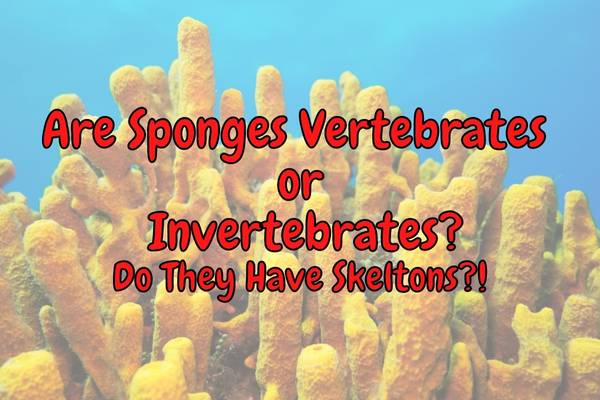Sea sponges are invertebrates. Sponges are an unusual group of animals in that they lack a nervous system. Instead, the sponges have ‘sensory cells’ that can detect chemicals in the water.
Although sponges do have a skeleton made from calcium as we do, this is a very different kind of skeleton from what vertebrate animals have. It does not make up particular bones as a vertebrate has. Sponges are ancient creatures that evolved from a lineage of animals that are much older than modern vertebrates.
Sponges are also called ‘Porifera’, which means ‘pore bearers’. They are primitive animals, having arisen early in animal evolution. The phylum includes over 10,000 described species, and new species are being discovered regularly.
The phylum is very diverse and its members display a wide range of body forms. The diversity of forms is reflected in the diversity of feeding habits.
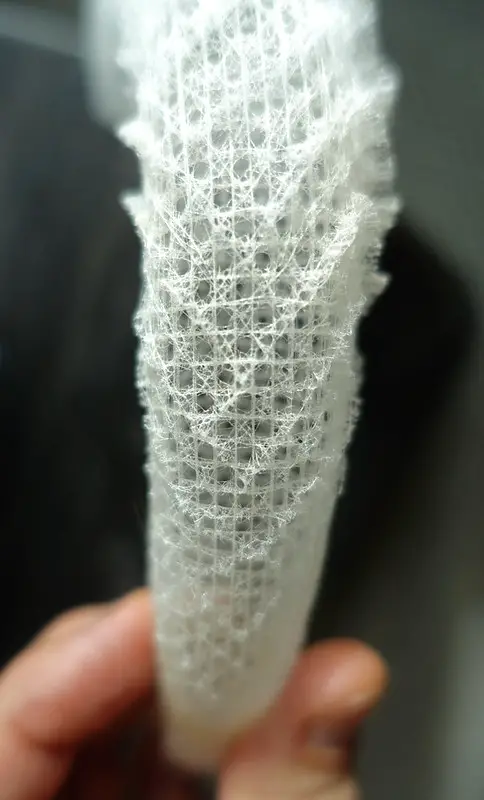
Steve Jurvetson
Sponges have two types of mineral skeletons and a protein-based one. The mineral skeletons are either calcareous or siliceous. Calcareous skeletons are made of calcium carbonate or silicic acid, while the protein-based supportive and flexible skeleton is made of a protein called spongin. All types come in a variety of shapes and sizes. The purpose of the skeleton is to support and protect the sponge.
Spongin is the main structural protein found in most sponge species, and it is what gives them their characteristic shape. It is made up of long chains of collagen-like molecules, which are arranged in a spiral fashion.
Spongin is secreted by so-called spongocytes and works with the skeleton to achieve a strong and flexible structure.
This arrangement makes the spongin fibers very strong and flexible, able to withstand the constant water pressure and movement that sponges are subjected to.
Sponges feed by filtering out small prey such as protists, small crustaceans, algae, bacteria, or detritus.
The basic body form is a mass of gelatinous material called ‘spongin’. The sponge body is divided into chambers by sheets of tissue called ‘septa’, which are perforated by small channels called ‘ostia’.
The skeleton of a sea sponge is composed of spicules, which are small, sharp, needle-like structures. Each spicule is made up of a protein called collagen and is surrounded by a hard shell.
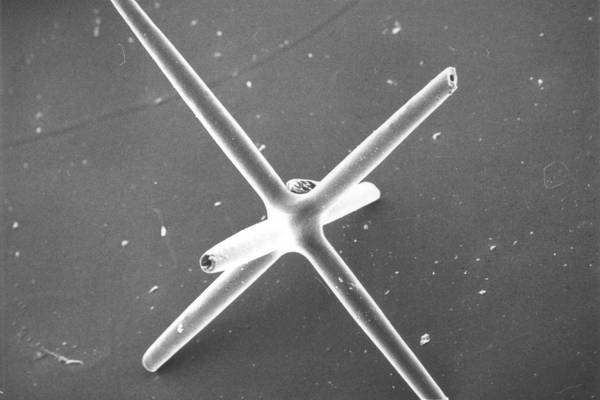
The spicules of a sponge are the subunits of their skeleton. Each sponge has thousands of these spicules, which are made of silica or calcium carbonate. The spicules give the sponge support and help to protect them from predators.
The ostia leads from the interior of the sponge to the outside, where the sponge draws water in and expels filtered water.
Sponges eat by using hair-like cilia to move water through their system and filter out the food particles present within.
Are Sponges Vertebrates or Invertebrates?
Sponges are invertebrates because they do not have a spine. The skeleton of a sponge is more like a mesh that keeps its cells in place!
In fact, spines in vertebrates evolved much later than the sponge. The first type of animal with vertebrates was large shark-like fish that roamed the ancient oceans!
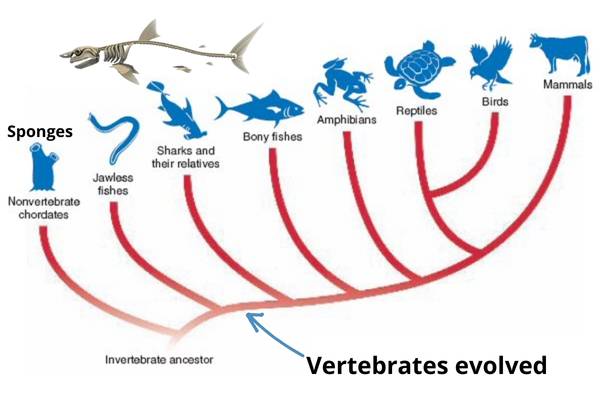
Interestingly sponges evolved from animals that had no skeleton at all and resembled jellyfish (or sea combs) more than anything!
These sponge ancestor animals are believed to have had a nervous system that disappeared again in the sponges but later evolved again in the more modern animals.
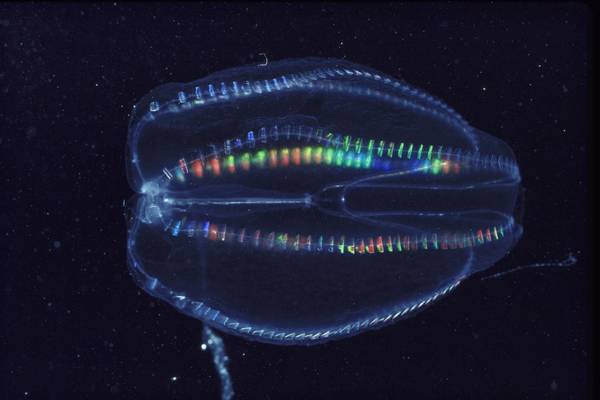
A comb jelly does not have a skeleton or spicules to support its body, so this feature is believed to have evolved initially in sponges!
How do sponges differ from all other animals?
Sponges are different from other animals mainly because they are multicellular stationary filter feeders. This combination is uncommon in animals but is also seen in corals, sea squirts, and anemones.
But in fact, sea sponges may be some of the first animals ever to exist!
Interestingly, sponges do not have a nervous system like almost all other multicellular animals have!
From what we know so far, the animals that they evolved from (something similar to the comb jellies or ctenophores) did have a primitive nervous system, but they lost it before they evolved into the animals we know as sponges today.
They do, however, possess some of the genes involved in nerve signaling that might be used for intracellular communication – demonstrating the extremely early states of a modern nervous system!
Sponges also differ from other animals in that they lack an internal body cavity. Rather, all of the sponge’s body, including its cells and its fluids, are contained within a thin external layer of cells known as the mesohyl that surrounds the skeleton which forms the framework to which their cells are attached.
Apart from their funny multicellular shape, sponges are not fundamentally different from other animals at the cellular level and do the same fundamental cellular physiology that all other animals do!
They have cells without a cell wall which makes them animals. All multicellular creatures without a cell wall are animals!
Whereas many single-celled animals also exist, there are also single-celled plants, bacteria, algae and protists that all have cell walls to support their cellular structure.
If sponges are stationary how do they eat?
Because sponges cannot move, they have to rely on the nutrients found in the water around them.
Sponges have eukaryotic cells without a cell wall so they cannot support themselves without their internal skeleton. They form a hard skeleton using calcium carbonate and a protein called spongin. This makes them appear harder than most animals, but their cells are in fact softer than those of plants!
Unlike plants, sponges cannot make their own energy like plants can even though they must always stand still like plants.

Only plants and some protozoa and bacteria are autotrophic because animals like the sponge are heterotrophs that need to eat other organisms as their energy and carbon source.
They do, however, make sure that as much water as possible comes to them by literally shoveling it in!
Sponges are filter feeders, which means they filter the water they live in for everything – live or dead!
The sponge also takes in detritus, such as dead bacteria, algae, and plants, and can therefore also be considered detritivores.
They are omnivores, which means that they eat other animals as well as plants.
Sponges are sometimes called “sea angels” as it is said that they clean the sea of dead animals and debris. Sponges also have a symbiotic relationship with small organisms called zooxanthellae, from which they can extract energy. This is common in other stationary marine animals such as corals, sea anemones, and sea squirts.
You can read much more about how and what sea sponges eat in my other article on sponges here!
Conclusion
Sponges are interesting creatures that have many unique characteristics. They are ancient animals that evolved before vertebrates, and they lack a nervous system. Rather, they have sensory cells that can detect chemicals in the water.
They lack a spine but do have a skeleton. Although they have a skeleton, it is nothing like the skeleton we have and serves mainly to keep the cells of the sponge suspended in the water with a high surface area.
Sponges also have two types of skeleton: mineral and protein-based. The mineral skeletons are either calcareous or siliceous. The purpose of the skeleton is to support and protect the sponge. The protein-based one is made out of collagen-like structural fibers called spongin.
Lastly, sponges eat by using hair-like cilia to move water through their system and filter out food particles present within. Sponges play an important role in cleaning up the ocean by eating dead animals and debris.

